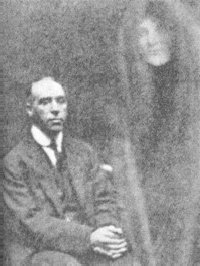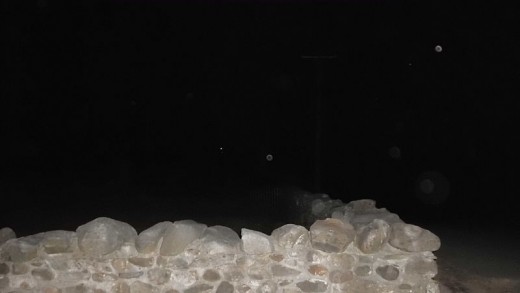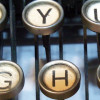How to Capture Paranormal Phenomena on Camera
A Spirit Photograph

Paranormal Phenomena Photographs
For many paranormal investigators, the holy grail is to capture an example of paranormal phenomena on camera. Why? To prove the existence of the thing they are chasing, naturally! Sadly, it's not easy to snap a spirit or photograph a UFO.
Photography has been around for over 150 years and there is still no undisputed photographic evidence of paranormal phenomena. That doesn't mean that it can never happen and it doesn't mean that you shouldn't try. Here are some tips to increase your chances of capturing paranormal phenomena on camera.
Orbs in Paranormal Photographs
Orbs are usually small grey or white circles that appear on a photograph. Their appearance has increased in frequency since the advent of the digital camera. Usually orbs are caused by a rational explanation - an out of focus speck of dust or a droplet of water, caught in a camera's flash. However, this explanation doesn't account for all orbs.
Orbs Captured on a Photograph

Different Explanations for Paranormal Phenomena Photographs
A great many people have taken photographs over the years that apparently show paranormal phenomena. After analysis most are found to have a rationale explanation. Generally, these photographs are caused by:
- technological error with the way the photograph was taken - exposure time, out of focus
- human error - odd angles, objects in front of lens
- failure to notice real object in the scene, thinking it has "appeared" after photo taken
- faking.
There are of course other photographs that seen to show paranormal phenomena that cannot be explained and defy rational explanation. If you are aiming to photograph the paranormal you should aim for your photographs to be in this category. You can do this by doing your best to eliminate the factors that cause most paranormal photographs to be found to be normal.
Different Types of Anomalous Photographs
Photographs can sometime have anomalies - something is in the photograph that apparently shouldn't be. Some of these anomalous photographs may be considered paranormal photographs.
- The photographer is deliberately trying to take a photograph of something paranormal, like a ghost.
- The photographer took a photo of a normal scene and later found something other-worldly (like an orb) in the photo that wasn't there when he took it.
- The photographer took a photo, as above, and found something ordinary (for instance a dog) that wasn't there when he took it.
Books for Paranormal Photography
Cameras to Capture Paranormal Phenomena
There is a lot of debate about whether digital or traditional film cameras are better for the paranormal investigator. Both have advantages and disadvantages, which are summarised below. In the end, it is your choice, but for the beginner, a digital camera is probably the most practical solution.
Digital Camera
Advantages:
- Ability to take and store hundreds of photographs without needing to change a roll of film.
- Photographs quickly available to analyse, no film to develop.
- Easily transferable to PC.
- Cheap models available.
Disadvantages:
- The camera's software automatically adjusts light levels, camera shake etc, so the image is enhanced and may not be what was actually there.
- Although you don't need film, you need lots of batteries, in case you run out.
- Digital images are more easily manipulated than traditional film, so their credibility is more readily questioned.
Film Camera
Advantages
- No software to automatically "enhance" the photograph. What you saw is what you print (generally!)
- You have a negative to analyse as well as the print.
Disadvantages
- Film can be damaged.
- Film can run out during a shoot or be improperly loaded.
- Cost of processing and printing hundreds of photographs.
- Photographs need to be scanned and uploaded to a PC.
Simple Tips to Help Capture Paranormal Phenomena on Camera
Many photographs of allegedly paranormal events or phenomena have simple explanations. Some of the most common are caused unintentionally by the photographer. Here are some tips for your paranormal investigation to help you avoid those mistakes.
- Before you start photographing, familiarise yourself with the site. Where are the lights, is there a road nearby that may cause car headlights to sweep across your lens, etc. By scouting the site you will be less likely to mistake the ordinary for the extra-ordinary.
- Check your equipment. Clean the lens and check for scratches and cracks.
- Make sure you have extra film or batteries.
- Keep very still. Shaky photographs cause blurred images that are open to misinterpretation.
- Keep the lens clear. Tie back long hair and make sure the camera strap is out of the way.
- Don't use a flash if possible.
- Don't smoke whilst photographing or you risk mysterious wispy trails in your photos!
- Don't exhale whilst taking a photo on cold nights - again, mysterious wispy cold breath!
- Use a high resolution - 5 megapixels or above.
- Take multiple shots if you think you spot something.
- Take shots from different angles
- Persevere!









